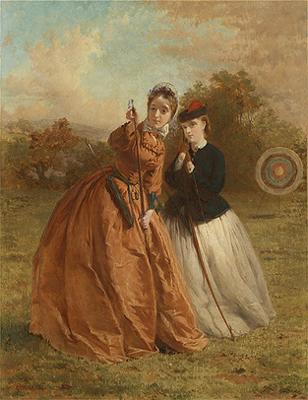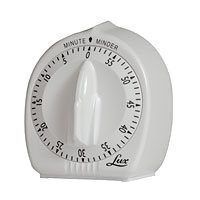Start Your Story (or Get It Rolling)
A Tutorial with Novelist Meredith Sue Willis
Fall 2015Session Two
Monday, October 26, 2015
Session One
Session Two
Session Three
Session Four
Session FiveFor a reminder of how the class works, go to the bottom.
Start Your Story (Or Get It Rolling):
Thinking about Process and Product
A review in an old issue of the New York Times Book Review of an unfinished novel by Richard Wright made the point that the book under review should never have been published because it was a very rough draft, and, while drafts are an essential part of the process of writing, they are not finished product.
I haven't read the book in question, but the point is well taken. There is a big difference between the process of writing and the product that you publish. A class or tutorial, of course, welcomes unfinished work, and the various drafts and experiments are part of what makes the finished work work. But you have to keep in mind that this part of your writing is very different from the final stage that uses your cool, critical, rational brain. When you are preparing a product for others to read, you look for holes in the story, for excessive adjectives, for gaps in continuity.
The drafting part-- the process part-- on the other hand, demands an open, loose, playful state of mind. Your unconscious and your dream life need to be available to you. You may have a sense of not knowing where this stuff is coming from. It seems to arise from your less-than-rational self, your imagination, your right brain, your muse!
Drafting, then, is about finding your story, exploring your characters, discovering themes you may not have known were there. Polishing is thinking of the reader, about how to make the work shine in someone else's eyes.
For example, consider beginnings. People often talk about how you need a "hook" to catch the reader. It's good advice, but it's advice for polishing and finishing, not for getting started. For many writers (although certainly not all) the first words you read are not the first words they wrote. I sometimes write pages of place description and character backstory to help me get started. I may or may not keep this material: I'm likely to use it somewhere, but rarely at the beginning. In fact, frequently the very last thing I polish and evaluate is the opening passage of a work.
Of course, another possibility is that you come up with a great opening line, and that, too, can lead you straight on to the rest of the story!
Exercise 1: Do a little research on your book shelves and copy 5 of your favorite story or novel first lines. Then, without any further analysis, do Exercise 2 & 3 below.
Exercise 2: ... Write 5 first lines of your own.
Exercise 3: Pick one of your first lines and write what comes into your mind for the next ten minutes, using the kitchen timer. See if it takes you anywhere interesting.
Exercise 4: Start a list of exercises of your own. Keep first lines, favorite exercises that have worked well for you, or just ideas. Use them when you're stuck, or when you've been away from writing for a while, or just for fun.
Exercise 5: I keep two lists: one is a long file on my computer, and my other is my public free writing exercises , which you are welcome to try too, of course.
Exercise 6: Go to your own files and find an old piece you wrote some time in the past. It may be a fragment or a false start. Work on it again for a while. Change it radically if you need to, but see where that old idea sends you now.
Visual Prompts
I don't use visual prompts in teaching very often. They are, however, one of the old standbys of writing classes. I once took a poetry workshop with Mary Lucille DeBerry who poured out old photographs on the seminar table, and we wrote from those. Sometimes I do use them on my Free Writing Exercises page, but usually it is because an image just appeals to me.
Look at the images at the top of this page. They all suggest a possibly dramatic moment between two people. If you want to know where the images came from, click here, but before you do, try the following exercise:
Exercise 7: There's nothing better than a conflict dialogue for starting your story or moving it forward. Write a scene or story that begins with one of the images at the top of the page. Remember that the image itself will not be a part of your story, so you have to include any description you need.
Just a reminder: Make these exercises work for you. One writer used a strawberry instead of an apple in last week's assignment. If you're writing a novel, you don't have to stick with my conflict dialogue images: visualize two people from your work in a moment of confrontation.
Exercise 8: Give yourself another prompt: think of a dialogue you have recently overheard or participated it. It might be quotidian or funny or dramatic. That doesn't matter. As rapidly as possible, write it down, paying no attention to editing or correctness. Try to make this as much pure process as possible. Then, later, go back and work on it. Continue it, adding material and fictionalizing.
Exercise 9: Give yourself a real life prompt. Take a notebook or a light computer out in public--to a food court in a mall, a city park-- a library. Settle in and observe. Observe objects or people, or listen for conversations. Take notes, and either on the spot or later, use the observation as the beginning of a fiction.
Happy writing!
You should receive my responses to the writing you turned in within a few days, by e-mail. If you don't get yours back by Thursday, please e-mail me to find out why.
The Way the Class Works
Each week there will be between 5 and 10 writing assignments for you to try or ignore as you please. The assignments are exercises aimed at getting your narrative imagination in gear--and rolling forward. You don't have to write all the exercises, although if you did, you would amass quite a bit of work by the end of the tutorial.
Write as much as you can, but send me an average around 1400 words a week, with a limit of 7000 words for the entire five weeks.
As you know, the course is completely online and consists of the weekly assignments plus the personal weekly feedback from the teacher. With hard work and a little luck, a tutorial like this will give you several good starts on prose narratives-- stories, novels, memoir, etc. or, if you work on one project, up to 30 new or revised pages of a draft.
For those of you already engaged in a project, the assignments can enrich and add material. Also, if you prefer, you may substitute sections of the ongoing work for the assignments. You may send more or less each week, but keep in mind the total limit for the five weeks.
Send the homework to me at MeredithSueWillis@gmail.com by midnight of the due date— Session One homework is due by Sunday night, October 25, 2015. Send the homework attached to an e-mail as a Word or Rich Text file. If this is a problem for you, e-mail me, and we'll work something out.
What is the Difference Between a Tutorial and a Class?
My online classes have longer, lecture-style essays and more readings, and they cost more. These tutorial "lessons" are stripped down, primarily lists of starters and exercises. The focus is, as always, on your writing and my responses to your submissions.
The first image is a a stock photo of two teens; the second an old color print of two young women practicing archery; the third one is Helen Mirren as Prospera with Ariel in a movie version of The Tempest with a female Prospero.
Wright is, of course, one of our best American writers-- if you haven't read Black Boy and Native Son, I recommend them highly.
Subscribe to Meredith Sue Willis's Free Newsletter for Readers and Writers:
Images and photos found on the various pages of this web site
may be used by anyone, but please attribute
the source when it is specified.
This work is licensed under a Creative Commons Attribution-NonCommercial-ShareAlike 3.0 Unported License.






